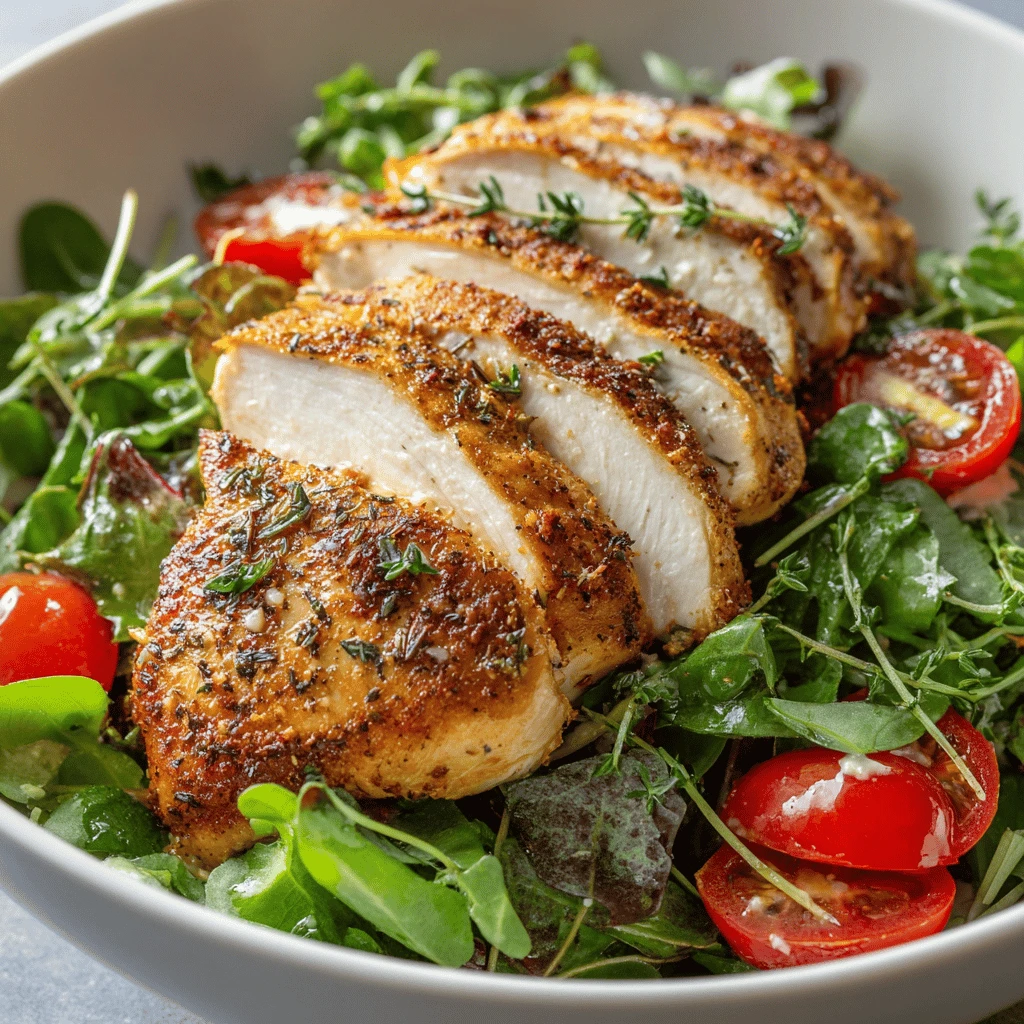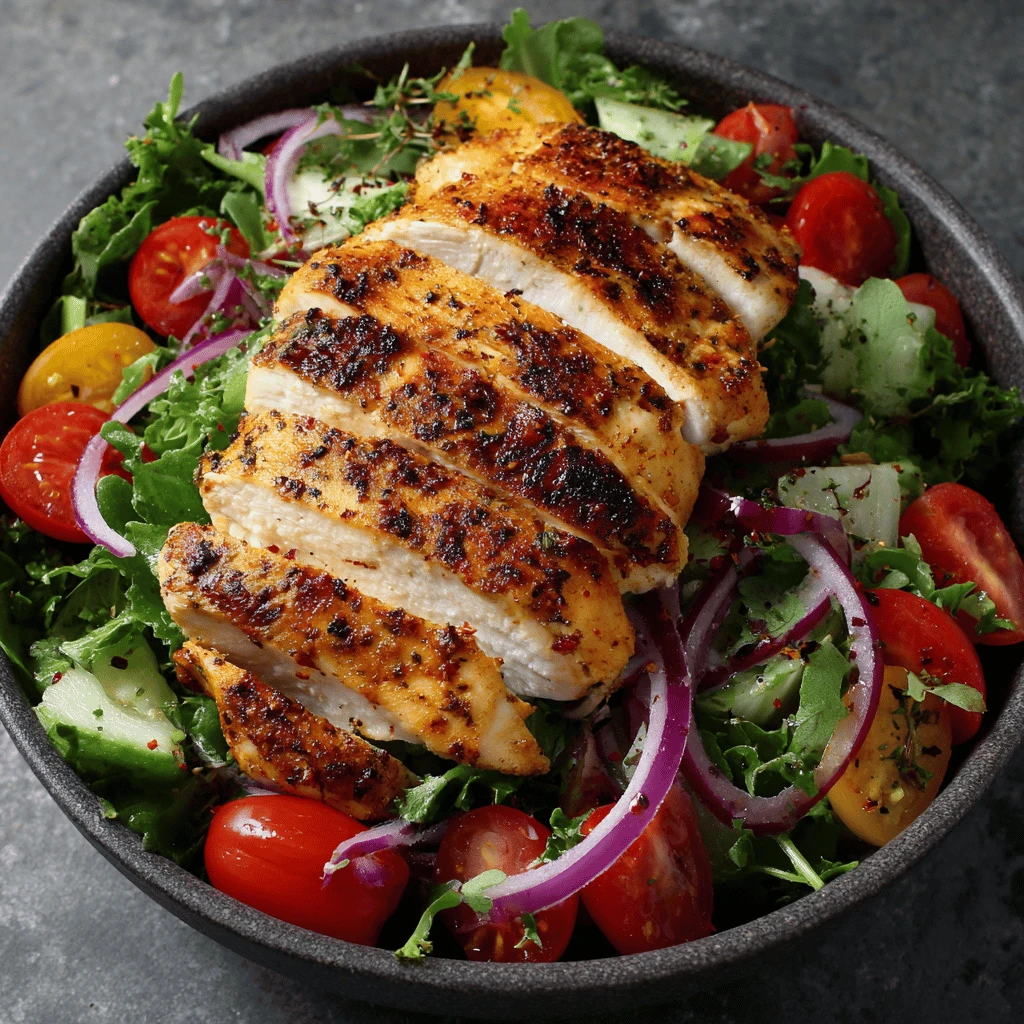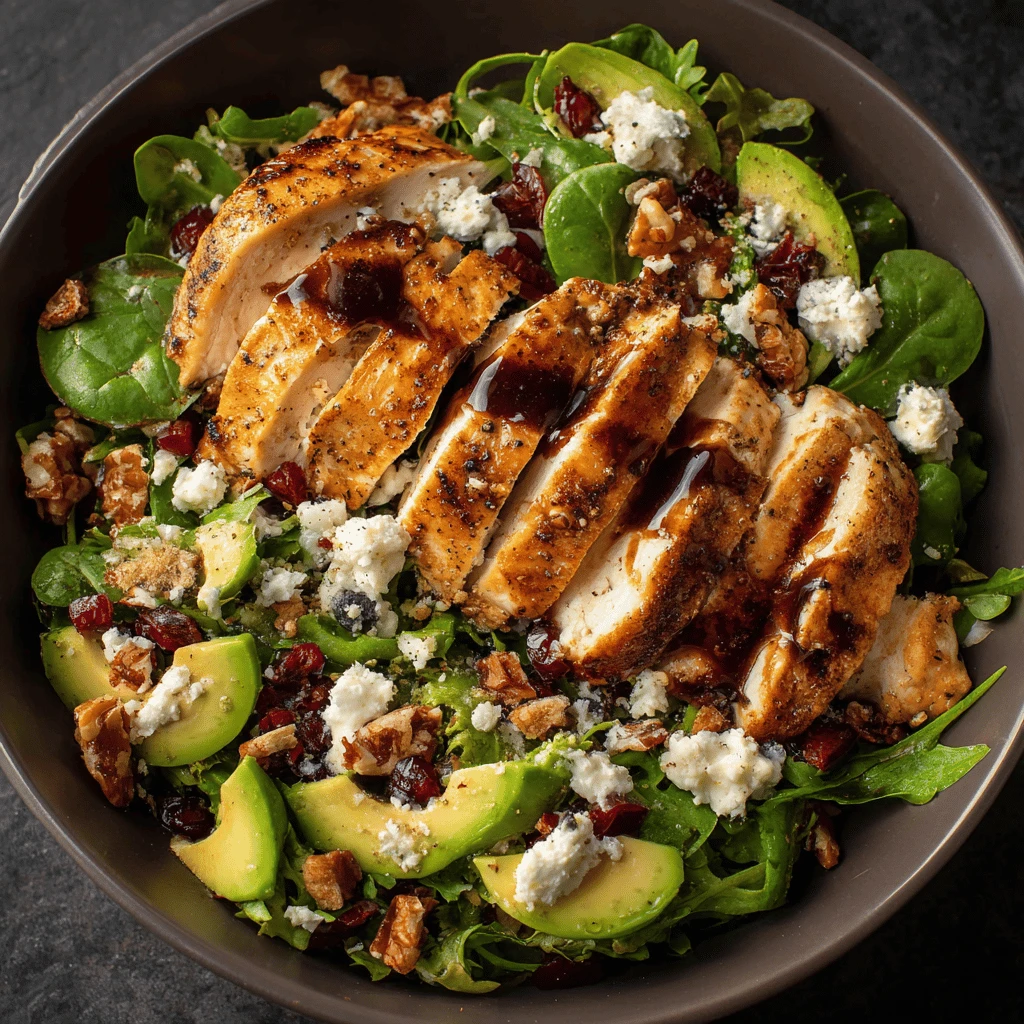Healthy Pan-Seared Chicken Breast Salad
Pan-seared chicken breast is a fantastic way to get lean protein into your diet, and when paired with fresh greens and vibrant vegetables, it becomes a truly satisfying and nutritious salad. This recipe guides you through creating a flavorful and healthy pan-seared chicken breast salad that’s perfect for a quick lunch or a light dinner. We’ll cover everything from selecting the best chicken to mastering the perfect sear and building a delicious, balanced salad.
Choosing the Right Chicken and Preparing It for Success
The foundation of any great chicken salad is, of course, the chicken itself. Opt for boneless, skinless chicken breasts that are relatively uniform in thickness. This ensures even cooking and prevents some parts from drying out before others are done.
Selecting Quality Chicken:
- Look for plump, pink breasts: The chicken should have a healthy pink color, not pale or gray.
- Check the sell-by date: Ensure the chicken is fresh and within its recommended use-by date.
- Consider organic or free-range: While these options may be more expensive, they often offer better flavor and ethical sourcing.
Preparing the Chicken:
- Pound the chicken: Place the chicken breasts between two sheets of plastic wrap or in a zip-top bag and gently pound them with a meat mallet or rolling pin to an even ½-inch thickness. This helps them cook evenly and quickly.
- Brine (optional): Soaking the chicken in a brine for 30 minutes to an hour can significantly improve its moisture and flavor. A simple brine consists of water, salt, and sugar.
- Pat dry thoroughly: Before seasoning, pat the chicken breasts completely dry with paper towels. This is crucial for achieving a good sear.
Mastering the Pan-Sear: Achieving Golden Perfection
The key to a delicious pan-seared chicken breast is achieving a beautiful golden-brown crust while keeping the inside juicy and tender. Here’s how to master the technique:
Essential Equipment:
- Heavy-bottomed skillet: A cast-iron skillet or stainless-steel pan works best for even heat distribution and excellent searing.
- Tongs: For safely flipping and moving the chicken.
- Meat thermometer: An instant-read thermometer is essential for ensuring the chicken is cooked to a safe internal temperature of 165°F (74°C).
The Sear Technique:
1. Heat the pan: Place the skillet over medium-high heat and let it heat up for several minutes until very hot.
2. Add oil: Add 1-2 tablespoons of a high-heat oil like olive oil, avocado oil, or coconut oil to the hot pan. The oil should shimmer but not smoke.
3. Season generously: Season the chicken breasts generously on both sides with salt, pepper, and any other desired spices, such as garlic powder, onion powder, paprika, or herbs like thyme or rosemary.
4. Sear the chicken: Carefully place the chicken breasts in the hot pan, making sure not to overcrowd it. Leave enough space between the breasts for proper searing.
5. Don’t move it: Let the chicken sear undisturbed for 4-5 minutes per side, or until a golden-brown crust forms. Resist the urge to move the chicken around, as this will prevent it from searing properly.
6. Check the temperature: Use a meat thermometer to check the internal temperature of the thickest part of the chicken. Once it reaches 165°F (74°C), remove the chicken from the pan.
7. Rest the chicken: Place the cooked chicken breasts on a cutting board and tent them loosely with foil. Let them rest for 5-10 minutes before slicing. This allows the juices to redistribute, resulting in a more tender and flavorful chicken breast.
Building a Balanced and Flavorful Salad
Now that you have perfectly pan-seared chicken, it’s time to build a delicious and healthy salad. The possibilities are endless, but here are some ideas to get you started:
Base Greens:
- Mixed greens: A blend of various greens provides a good mix of nutrients and textures.
- Romaine lettuce: Offers a crisp and refreshing base.
- Spinach: Packed with vitamins and minerals.
- Arugula: Adds a peppery and slightly bitter flavor.
Vegetable Add-Ins:
- Cherry tomatoes: Provide sweetness and acidity.
- Cucumbers: Add a cool and refreshing crunch.
- Bell peppers: Offer vibrant color and a slightly sweet flavor.
- Red onion: Adds a sharp and pungent bite (use sparingly).
- Carrots: Provide sweetness and a satisfying crunch.
- Avocado: Adds healthy fats and a creamy texture.
- Corn: Adds sweetness and a chewy texture.
Other Add-Ins:
- Nuts and seeds: Add healthy fats and a satisfying crunch (e.g., almonds, walnuts, pumpkin seeds, sunflower seeds).
- Cheese: A small amount of crumbled cheese can add flavor and creaminess (e.g., feta, goat cheese, blue cheese).
- Dried fruit: Adds sweetness and chewiness (e.g., cranberries, raisins).
- Hard-boiled eggs: Provide protein and a creamy texture.
- Quinoa or other grains: Adds substance and complex carbohydrates.
Assembling the Salad:
1. Prepare the greens: Wash and dry the greens thoroughly.
2. Chop the vegetables: Chop or slice the vegetables into bite-sized pieces.
3. Slice the chicken: Slice the rested chicken breast thinly against the grain.
4. Combine ingredients: In a large bowl, combine the greens, vegetables, and other add-ins.
5. Top with chicken: Arrange the sliced chicken on top of the salad.
6. Drizzle with dressing: Add your favorite healthy dressing (see dressing suggestions below).
7. Toss gently: Gently toss the salad to combine the ingredients and dressing.
Delicious and Healthy Dressing Options
The right dressing can elevate your pan-seared chicken breast salad to a whole new level. Here are some healthy and flavorful options:
Homemade Dressings:
- Lemon Vinaigrette: A classic and refreshing dressing made with olive oil, lemon juice, Dijon mustard, honey, salt, and pepper.
- Balsamic Vinaigrette: A tangy and slightly sweet dressing made with olive oil, balsamic vinegar, Dijon mustard, honey, salt, and pepper.
- Honey-Mustard Dressing: A sweet and savory dressing made with olive oil, honey, Dijon mustard, apple cider vinegar, salt, and pepper.
- Avocado Ranch Dressing: A creamy and healthy alternative to traditional ranch dressing, made with avocado, Greek yogurt, lime juice, garlic, herbs, salt, and pepper.
Store-Bought Dressings:
- Look for dressings made with olive oil or avocado oil as the base.
- Check the nutrition label and choose dressings that are low in added sugar and sodium.
- Avoid dressings that contain artificial flavors, colors, or preservatives.
- Some good store-bought options include light vinaigrettes, tahini dressings, and yogurt-based dressings.
Tips for Dressing:
- Dress the salad just before serving to prevent the greens from wilting.
- Start with a small amount of dressing and add more to taste.
- Toss the salad gently to avoid bruising the greens.
Variations and Serving Suggestions
This recipe is highly adaptable to your personal preferences and dietary needs. Here are some variations and serving suggestions to inspire you:
Variations:
- Mediterranean Chicken Salad: Add Kalamata olives, feta cheese, cucumbers, tomatoes, and a lemon-herb vinaigrette.
- Southwestern Chicken Salad: Add black beans, corn, avocado, bell peppers, and a cilantro-lime dressing.
- Asian Chicken Salad: Add shredded carrots, cabbage, edamame, sesame seeds, and a ginger-soy dressing.
- Grilled Chicken Salad: Grill the chicken breasts instead of pan-searing them for a smoky flavor.
Serving Suggestions:
- Serve the salad as a light lunch or dinner.
- Pack it for a healthy and satisfying meal on the go.
- Serve it as a side dish at a barbecue or potluck.
- Pair it with a side of whole-wheat bread or crackers.
Tips for Meal Prep:
- Cook the chicken ahead of time and store it in the refrigerator for up to 3 days.
- Chop the vegetables and store them in separate containers in the refrigerator.
- Make the dressing ahead of time and store it in the refrigerator for up to 1 week.
- Assemble the salad just before serving to prevent the greens from wilting.
Frequently Asked Questions (FAQ)
- How do I keep my chicken breast from drying out when pan-searing? Pounding the chicken to an even thickness, brining it, and avoiding overcooking are all crucial steps to keep it juicy. Also, resting the chicken after cooking allows the juices to redistribute.
- What is the best oil to use for pan-searing chicken? Oils with high smoke points like olive oil, avocado oil, or coconut oil are ideal.
- Can I use frozen chicken breasts for this recipe? Yes, but be sure to thaw them completely before cooking. Pat them dry very well before seasoning and searing.
- Can I make this salad ahead of time? You can prepare the components separately (chicken, veggies, dressing) and store them in the fridge. Assemble the salad just before serving to prevent wilting.
- What other protein can I use instead of chicken? Grilled shrimp, tofu, or chickpeas are all good alternatives.
- How long does cooked chicken last in the refrigerator? Cooked chicken will last for 3-4 days in the refrigerator.
- What is the best way to reheat cooked chicken? The best way to reheat cooked chicken is in the oven at a low temperature (around 325°F or 160°C) with a little bit of broth or water to keep it moist. You can also reheat it in a skillet on the stovetop over medium-low heat.
- Can I freeze cooked chicken? Yes, you can freeze cooked chicken for up to 2-3 months. Wrap it tightly in plastic wrap and then in foil or place it in a freezer-safe container.




